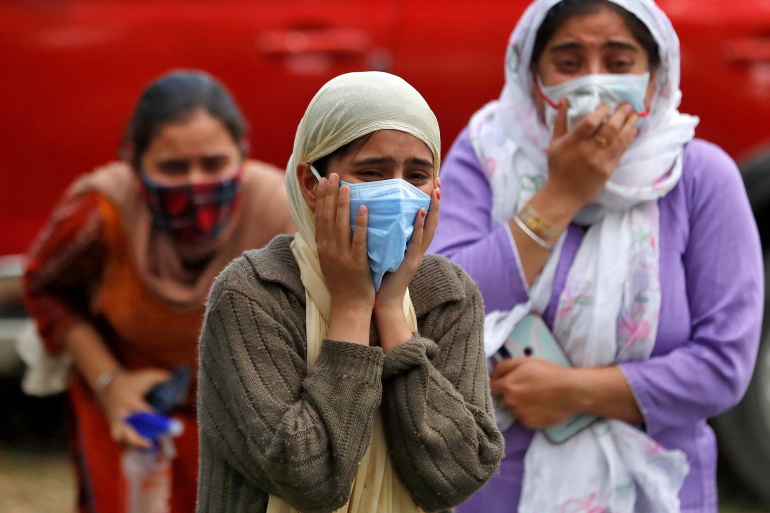
New Delhi: A rapid rise in cases of mucormycosis, also known as “black fungus”, has added to the challenges faced by India’s healthcare system as it deals with a massive second wave of COVID-19 infections.
Mucormycosis is a fungal infection that causes blackening or discolouration over the nose, blurred or double vision, chest pain, breathing difficulties and coughing blood.
Mucormycosis is caused by exposure to mucor mould, which is commonly found in soil, air and even in the nose and mucus of humans.
It spreads through the respiratory tract and erodes facial structures. Sometimes, doctors will have to surgically remove an infected eye to stop the infection from reaching the brain.
The disease has a close link to diabetes and conditions that compromise the immune system. Experts have said that overuse of drugs that suppress the immune system during the COVID-19 pandemic could be causing the surge.
Data from the US Centers for Disease Control and Prevention shows that mucormycosis has a mortality rate of 54 percent, which can vary depending on the condition of the patients and the body part affected.
Federal chemicals and fertilisers minister Sadananda Gowda said nearly 9,000 cases had been reported in India in recent weeks, mostly in people infected with COVID-19 or recovering from the disease. Normally, the country records fewer than 20 cases a year.
The infection has led to a shortage of Amphotericin B, the drug used to treat the condition. Gowda did not share the number of fatalities, but local media have said more than 250 have died because of the disease.
Is it contagious?
The disease is not contagious, which means that it cannot spread from contact between humans or animals.
But it does spread from fungal spores that are present in the air or in the environment, which are almost impossible to avoid.
“Bacteria and fungi are present in our bodies already, but they are kept in check by the body’s immune system,” said K Bhujang Shetty, head of Narayana Nethralaya a speciality eye hospital.
“When the immune system goes down because of cancer treatment, diabetes or use of steroids, then these organisms get an upper hand and they multiply,” said Shetty.
Is it spread by unsanitised cylinders or ventilators?
Experts say unsanitary conditions could increase the risk of developing infections.
“There is a lot of contamination in the pipes used for oxygen, the cylinders that are being used, the humidifiers used,” said Nishant Kumar, an ophthalmologist at Hinduja Hospital in Mumbai.
“If you are immuno-suppressed, and you have been on these pipes and oxygens for a long period of time, then these infections get much more of an opportunity to get in.”
“Hospitals were dirty even before April. We need epidemiological studies to assess why these cases are rising now,” said SP Kalantri, senior doctor and researcher at the Mahatma Gandhi Institute of Medical Sciences in Maharashtra.
Why mucormycosis and not other fungal infections?
COVID-19 has been associated with a wide range of secondary bacterial and fungal infections, but experts say India’s second COVID wave has created a perfect environment for mucormycosis.
Low oxygen, diabetes, high iron levels, immunosuppression, as well as several other factors including prolonged hospitalisation with mechanical ventilators, creates an ideal milieu for contracting mucormycosis, researchers wrote in the journal Diabetes & Metabolic Syndrome: Clinical Research & Reviews.
“It is a new challenge and things are looking bleak,” said Ambrish Mithal, the chairman and head of the endocrinology and diabetes department at Max Healthcare, a chain of private hospitals in India.
“Earlier I used to come across just a few cases every year but the current infection rate is frightening.” Al Jazeera


